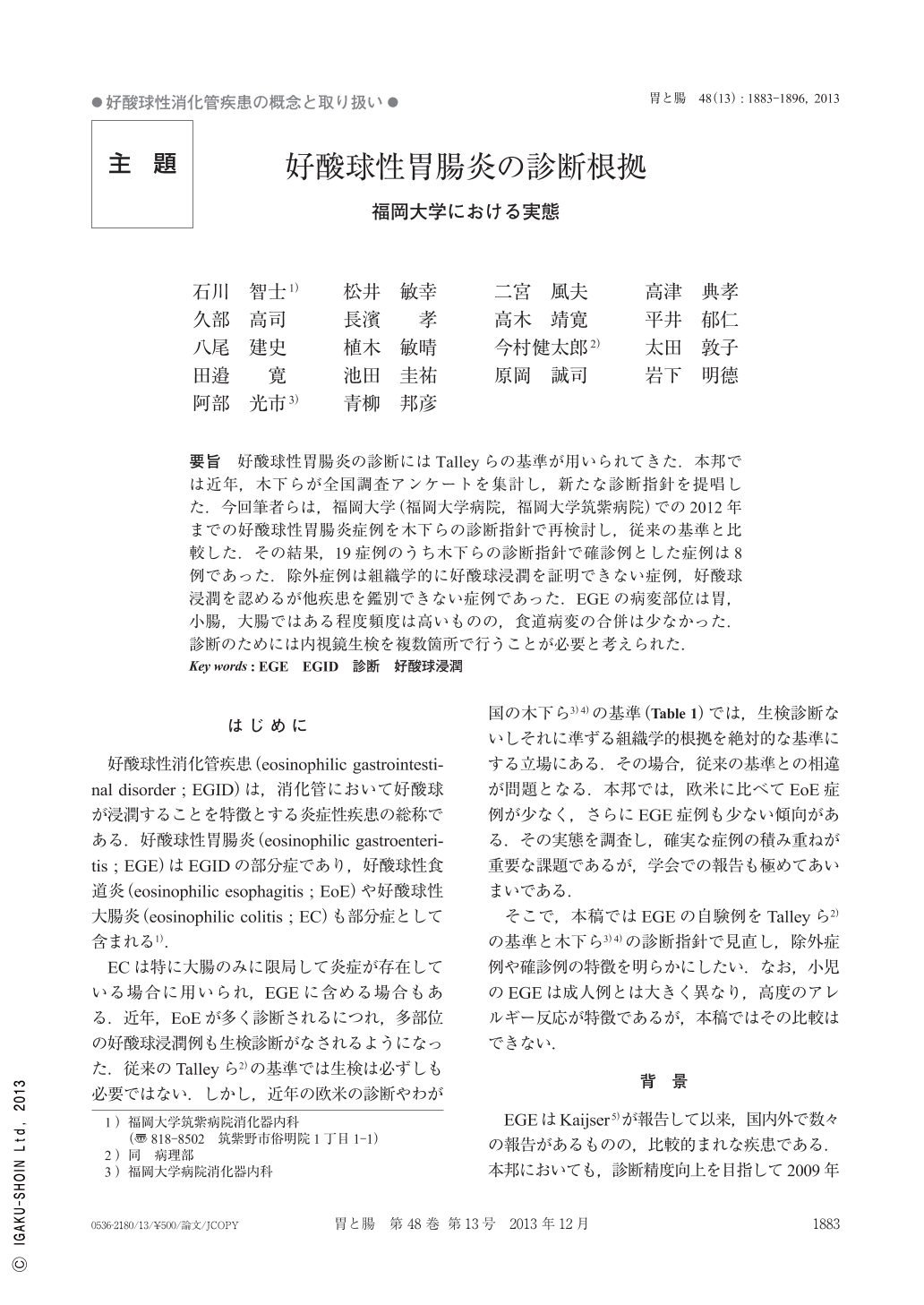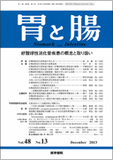Japanese
English
- 有料閲覧
- Abstract 文献概要
- 1ページ目 Look Inside
- 参考文献 Reference
要旨 好酸球性胃腸炎の診断にはTalleyらの基準が用いられてきた.本邦では近年,木下らが全国調査アンケートを集計し,新たな診断指針を提唱した.今回筆者らは,福岡大学(福岡大学病院,福岡大学筑紫病院)での2012年までの好酸球性胃腸炎症例を木下らの診断指針で再検討し,従来の基準と比較した.その結果,19症例のうち木下らの診断指針で確診例とした症例は8例であった.除外症例は組織学的に好酸球浸潤を証明できない症例,好酸球浸潤を認めるが他疾患を鑑別できない症例であった.EGEの病変部位は胃,小腸,大腸ではある程度頻度は高いものの,食道病変の合併は少なかった.診断のためには内視鏡生検を複数箇所で行うことが必要と考えられた.
Diagnosis of eosinophilic gastroenteritis has been made based on Talley's criteria for a long time. In Japan, recently Kinoshita summed up a questionnaire-based survey and proposed new diagnostic criteria. We re-examined our own cases with eosinophilic gastroenteritis by Kinoshita's criteria in Fukuoka university till 2012 and compared them with results from Tally's criteria. The result was that there were 8 definitive diagnostic cases which fitted Kinoshita's criteria out of 19cases which fitted Tally's criteria. Eleven excluded cases were comprised of 4cases which did not have pathological eosinophilic infiltration and 7cases in which other diseases could not be excluded. Disease location of eosinophilic gastroenteritis was mostly in the stomach and small intestine. We conclude that we should take many biopsy specimens from the gut mucosa to diagnose eosinophilic gastroenteritis and elucidate the pathophysiology of this disease.

Copyright © 2013, Igaku-Shoin Ltd. All rights reserved.


